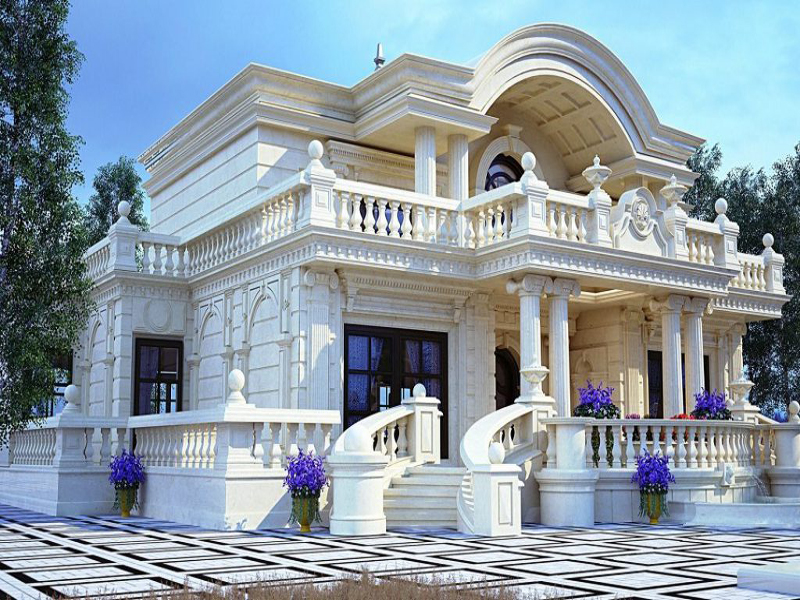
Stone Facade
There are several reasons why the facade of a building matters. Serving as the building’s public face and creating an impression on visitors, onlookers, and potential tenants is its main purpose. A well-planned and visually beautiful facade can enhance a building’s overall appearance and contribute to the distinct character of the surrounding area. Moreover, a building’s facade plays a significant role in defining its architectural style, which can range from modern to traditional or creative. In addition, the facade serves as a shield against external elements like wind, noise, and temperature fluctuations that could harm the building’s interior. Moreover, it helps regulate heat gain and loss, improving a building’s energy efficiency. From a practical standpoint, the facade can help provide natural light and ventilation to the internal spaces. This article aims to explore the significance of stone facades, their various typologies, attributes, and uses.
Important features of stone facade
Due to their numerous advantages, stones are extensively utilized in constructing building exteriors. Their durability makes them a popular choice for facade construction, offering exceptional resistance to weathering, environmental factors, and external forces, thereby ensuring long-lasting and low-maintenance facades. The timeless aesthetic appeal of stones imparts a sense of permanence, elegance, and sophistication to a building’s exterior. Moreover, their high thermal mass helps regulate interior building temperature and enhance energy efficiency, providing natural insulation that reduces air conditioning and heating costs. With a variety of hues, textures, and patterns, stones help architects to create distinctive and visually captivating facades. Furthermore, integrating stones into building exteriors supports environmentally friendly construction practices, as there are many natural, recyclable, and locally available stone varieties that reduce the environmental impact of manufacturing and transportation. Stones are chosen for building facades for their beauty, sustainability, and ability to enhance a building’s overall performance and lifespan.
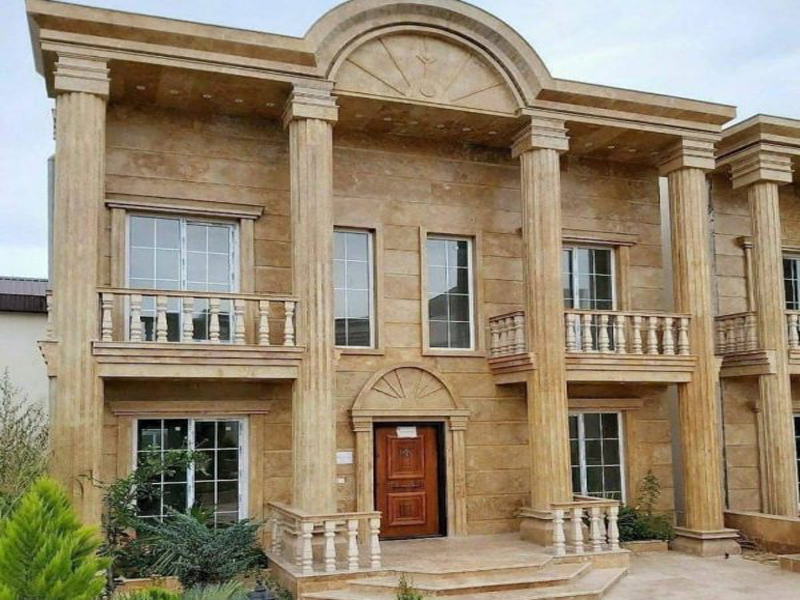
Characteristics of stone facade
To ensure durability, aesthetic appeal, and structural integrity, stone facades should possess several characteristics. Therefore, the qualities listed below can enhance the overall durability and quality of a building’s design:
1. Durability
Over time, stone facades should be able to endure weathering, environmental conditions, and other outside forces.
2. Weather resistance
To avoid damage and deterioration, stone facades should be able to withstand changes in temperature, moisture, and other weather-related elements.
3. Aesthetic appeal
Stone facades should have a pleasing appearance that accentuates the building’s visual appeal and blends in with its overall design.
4. Structural stability
To ensure safety and stability, stone facades must be structurally sound and able to support the building to a sufficient degree.
5. Low maintenance
Over time, stone facades should need very little maintenance, including occasional repairs and upkeep.
6. Insulation
To increase the building’s energy efficiency and occupant comfort, stone facades should offer some degree of sound and thermal insulation.
7. Sustainable sourcing
To reduce its negative effects on the environment, stone used in facades should be sourced ethically and sustainably.
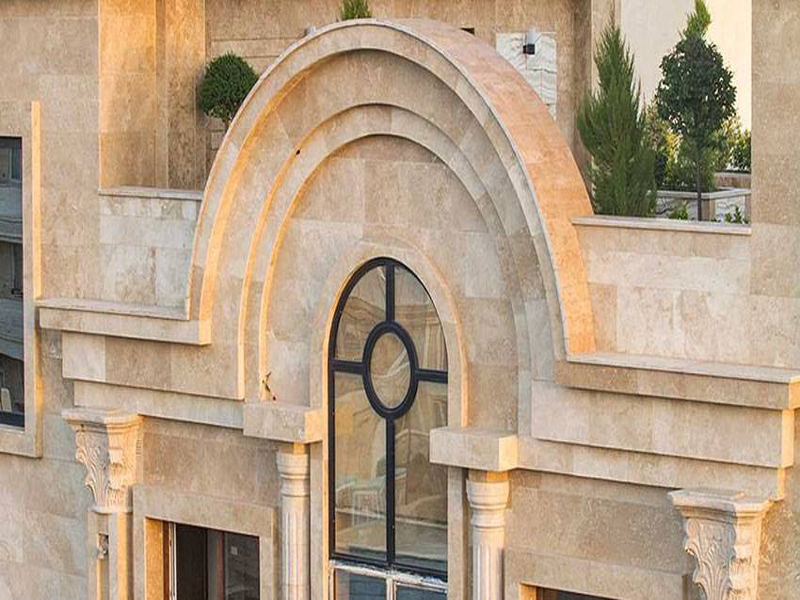
Which stones are the best for facades?
Several types of stones are commonly used for facades, each with its own unique characteristics and aesthetic appeal. Some of the best stones for facades include:
Granite
Granite is a common material for facade cladding because of its strength, resilience, and inherent beauty. Because of its high density and ability to withstand weather, it can withstand the elements and hold up its appearance over time. Granite comes in a broad variety of hues and patterns, offering endless design possibilities to go with different architectural philosophies. It is a great material for external cladding because, is not only aesthetically pleasing but also fire-resistant and has low water absorption. Its inherent stain and scratch resistance makes it even more suitable for facade applications, and it requires little upkeep to maintain its flawless appearance. Granite’s sustainability and environmental friendliness also add to its allure as a building material. It is a plentiful, naturally occurring resource that can be obtained locally, minimizing the impact on the environment. Granite’s qualities make it an excellent option for facade cladding, enhancing a building’s appearance and long-term worth.
Limestone
Limestone is a popular choice for facade cladding due to its natural elegance, versatility, and affordability. Its soft, earthy tones and subtle textures add a timeless and sophisticated look to buildings, making it a popular choice for both traditional and contemporary designs. Limestone is also relatively lightweight compared to granite or marble, making it easier to handle and install, and reducing structural load on the building.
Limestone is not as dense as granite and may require more maintenance to prevent staining and weathering. However, its affordability and wide range of colors and finishes make it an attractive alternative for facade applications. Limestone is also more porous than granite, which can affect its durability and weather resistance, but proper sealing and maintenance can mitigate these concerns. Overall, the characteristics of limestone, including its elegance, versatility, and affordability, make it a suitable choice for facade cladding, offering a balance of aesthetic appeal and practicality.
Sandstone
Because of its natural beauty, durability, and versatility, sandstone is common choice for facade cladding. It’s warm, earthy tones and unique grain patterns add a timeless and rustic look to buildings, making it an appealing option in both traditional and modern architectural styles. Sandstone is also relatively easy to carve and shape, allowing for intricate designs and detailing on facades.
In comparison to limestone, sandstone is generally more durable and weather-resistant, making it suitable for exterior applications in various climates. However, it is less dense than granite, which may affect its long-term durability and resistance to wear and tear. Sandstone is also more porous than granite, but less so than limestone, requiring proper sealing and maintenance to prevent staining and weathering.
Marble
Marble is a luxurious and elegant choice for facade cladding, known for its timeless beauty, unique veining, and lustrous finish. Its natural patterns and range of colors add a touch of sophistication to buildings, making it a popular choice for high-end and prestigious architectural designs. Marble is also relatively dense and durable, offering excellent resistance to scratching, staining, and weathering.
Marble compare to sandstone, is more refined and polished, often used to create a luxurious and grand appearance. However, it is generally less porous than sandstone, requiring less maintenance to preserve its appearance. On the other hand, marble is softer and more susceptible to scratching and etching compared to granite, making it less suitable for high-traffic areas or harsh weather conditions.
Travertine
Travertine is another choice for facade cladding. It is unique and has natural appearance, versatility, and durability. Its earthy tones, subtle variations, and porous texture create a warm and inviting aesthetic, making it a sought-after option for both contemporary and traditional architectural designs. Travertine is also relatively lightweight and easy to cut, allowing for versatile design options and intricate detailing on facades.
In comparison to marble, travertine is generally more porous and textured, offering a more rustic and natural look. However, its porous nature may require more frequent sealing and maintenance to prevent staining and weathering. On the other hand, travertine is less dense and more susceptible to scratching and etching compared to granite, making it less suitable for high-traffic areas or harsh weather conditions.
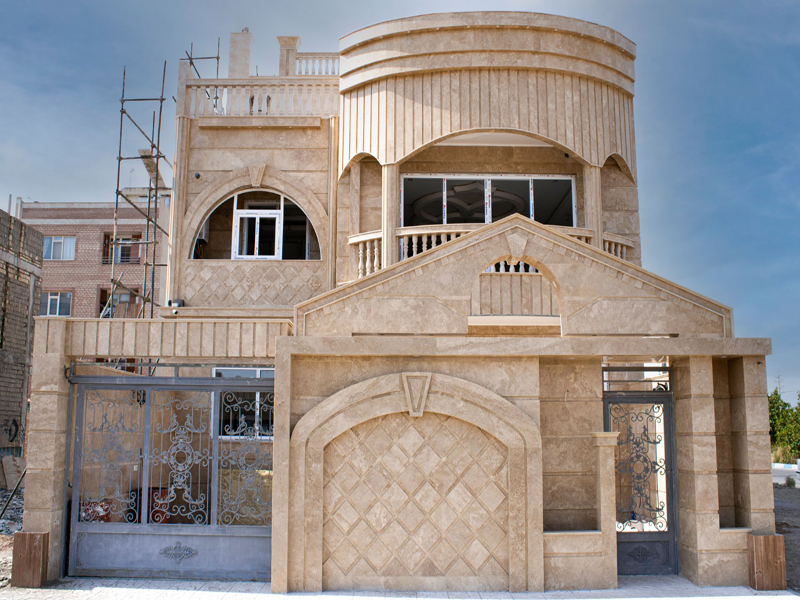
Slate
Slate is also a good choice for facade cladding for its natural beauty, durability, and low maintenance requirements. It is known for its fine-grained texture, earthy colors, and distinctive layered appearance, adding a rustic and elegant touch to buildings. Slate is highly resistant to water, weathering, and temperature changes, making it suitable for exterior applications in various climates. Its natural cleft surface provides a unique and textured look, adding character to facades.
In compare to granite, slate offers a more rustic and textured appearance, making it well-suited for traditional and contemporary architectural designs. While not as dense as granite, slate is still highly durable and requires minimal maintenance. Additionally, compared to limestone and sandstone, slate is known for its superior resistance to water and weathering, making it an excellent choice for exterior cladding in areas with harsh environmental conditions.
How to choose the stone facade of the building?
The ideal stone for a facade will vary depending on the architecture, location, climate, and desired look of the building. The specification should be taken into account, but how? In order to make sure that the stone chosen for a building’s facade satisfies the project’s functional, aesthetic, and practical requirements, it is necessary to take into account a number of significant factors. The following procedures can aid in directing the selection process:
1. Recognize the project’s needs
Begin by identifying the building’s unique requirements, taking into account its architectural style, structural requirements, surrounding conditions, and desired aesthetic.
2. Evaluate the location and climate
To choose a stone that will survive these elements, take into account the local climate, weather patterns, and environmental circumstances. For instance, a sturdy and weather-resistant stone like granite or limestone may be appropriate in regions with severe weather.
3. Determine the design aesthetic
Establish the design aesthetic by taking the building’s style and overall design vision into account. To achieve the desired aesthetic and complement the architectural style, select a stone facade that comes in a variety of colors, textures, and finishes from different stone types.
4. Assess the maintenance needs
Take into account how much upkeep the stone facade will need in the long run. While some stones are more low-maintenance, others might need to be sealed or cleaned on a regular basis.
5. Budget considerations
Determine whether the stone’s price is in line with the project’s budget by analyzing its total cost, including installation and maintenance costs.
6. Seek professional guidance
To obtain knowledgeable guidance on the best stone facade, speak with architects, designers, and stone suppliers.
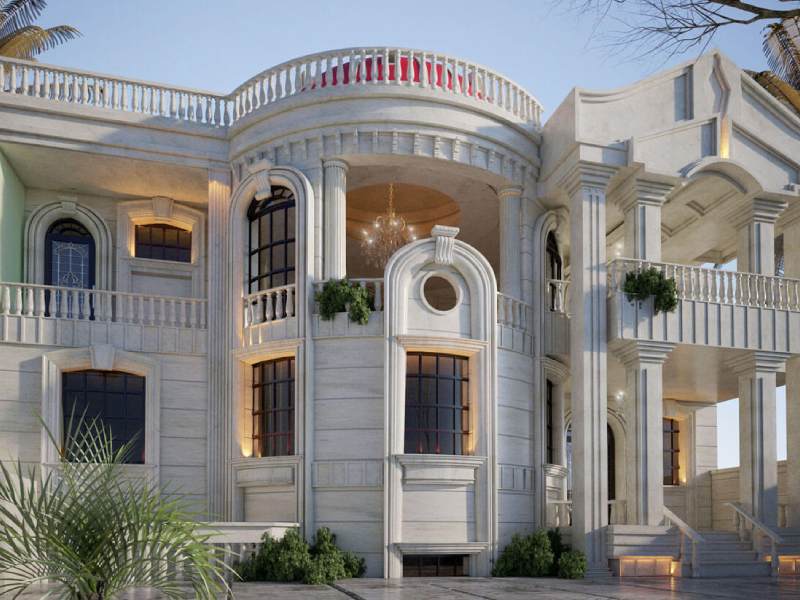
READ MORE: crystal stone
Conclusion
The information provided highlights the exceptional qualities of stone as a material widely utilized in the construction industry. Renowned for its resistance, beauty, and natural appeal, stone is valued for its versatility and suitability for specific spaces based on its role, color, and unique characteristics. When incorporated into building facades, stones not only enhance the aesthetic appeal but also contribute to the strength, warmth, and intrinsic value of the structure. Each type of stone brings its own distinct qualities and attributes, allowing architects and designers to create visually stunning and durable facades that stand the test of time. The integration of stone facade into building exteriors not only adds to the overall beauty of the structure but also imbues it with a sense of resilience, sophistication, and timeless elegance, making it a material of choice for constructing enduring and visually captivating architectural designs.

